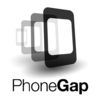|
|
| Línea 97: |
Línea 97: |
| | <html> | | <html> |
| | <head> | | <head> |
| − | <title>jQuery Mobile Demo</title> | + | <title>Primera Web con jQuery Mobile</title> |
| − | <link href="jquery.mobile-1.0rc2.min.css" rel="stylesheet" type="text/css"/> | + | <link rel="stylesheet" href="http://code.jquery.com/mobile/1.3.1/jquery.mobile-1.3.1.min.css" /> |
| − | <script src="jquery-1.6.4.min.js"></script> | + | <script src="http://code.jquery.com/jquery-1.9.1.min.js"></script> |
| − | <script src="jquery.mobile-1.0rc2.min.js"></script> | + | <script src="http://code.jquery.com/mobile/1.3.1/jquery.mobile-1.3.1.min.js"></script> |
| | </head> | | </head> |
| | <body> | | <body> |
Revisión de 04:58 29 may 2013

|
Trabajo en proceso, espera cambios frecuentes. Tu ayuda y retroalimentación son bienvenidos.
Ver página de charlas.
|

|
PhoneGap
Tutorial para desarrollar aplicaciones móviles multiplataforma
¿Qué es jQuery Mobile
- Framework para crear intefaces de usuario basadas en HTML5
- -Nos abstrae de las diferencias para el desarrollo entre los distintos navegadores.
-Write less, do more (jQuery)
-Diseño atractivo "out of the box": hacen diseñador al programador.
- Construido a partir de la librería jQuery y de jQueryUI
- Orientado especificamente para móviles
Diseño responsivo
- Uso de CSS media queries: hojas de estilo css especificas para dispositivos según anchura de pantalla, resolución o características.
- Grid fluido, especificando sus elementos mediante unidades relativas.
- Imágenes y media también en unidades relativas.
Diseño responsable
- Se utiliza el criterio "mobile first":
- Diseños sencillos
- Diseños más complejos mediante media queries y siempre con un min-width
- Se evita llevar un diseño pesado y aligerarlo para conseguir un time load aceptable para la red 3G.
- Imágenes específicas para el tamaño de pantalla de los móviles, tanto por ancho de banda como por tamaño de pantalla, ver ejemplo
- Uso de versiones minified y gzip
Ejemplo CSS Mobile First
- Las media queries en ems en vez de pixeles para asegurarnos que el layout se adaptará al cambio del tamaño de las fuentes, además de al ancho de pantalla.
- Para calcular la anchura en ems, se divide en ancho de nuestro objetivo entre 16px (tamaño de letra por defecto)
- Aplicaciones Web accesibles via navegador
/* Start with core styles outside of a media query that apply to mobile and up */
/* Global typography and design elements, stacked containers */
body { font-family: Helvetica, san-serif; }
H1 { color: green; }
a:link { color:purple; }
/* Stack the two content containers */
.main,
.sidebar { display:block; width:100%; }
/* First breakpoint at 576px */
/* Inherits mobile styles, but floats containers to make columns */
@media all and (min-width: 36em){
.main { float: left; width:60%; }
.sidebar { float: left; width:40%; }
}
/* Second breakpoint at 800px */
/* Adjusts column proportions, tweaks base H1 */
@media all and (min-width: 50em){
.main { width:70%; }
.sidebar { width:30%; }
/* You can also tweak any other styles in a breakpoint */
H1 { color: blue; font-size:1.2em }
}
Cómo empezar
- Visitar página jQueryMobile para su descarga.
- Leer el tutorial que incluye.
- Creamos una plantilla para empezar a trabajar, mejor utilizar un CDN:
<link rel="stylesheet" href="http://code.jquery.com/mobile/1.3.1/jquery.mobile-1.3.1.min.css" />
<script src="http://code.jquery.com/jquery-1.9.1.min.js"></script>
<script src="http://code.jquery.com/mobile/1.3.1/jquery.mobile-1.3.1.min.js"></script>
- Utilizaremos el atributo data-role para definir las distintas partes de nuestra aplicación o sitio web:
<!DOCTYPE HTML>
<html>
<head>
<title>Primera Web con jQuery Mobile</title>
<link rel="stylesheet" href="http://code.jquery.com/mobile/1.3.1/jquery.mobile-1.3.1.min.css" />
<script src="http://code.jquery.com/jquery-1.9.1.min.js"></script>
<script src="http://code.jquery.com/mobile/1.3.1/jquery.mobile-1.3.1.min.js"></script>
</head>
<body>
<!-- Page Start-->
<div data-role="page">
<!-- Page Header Start -->
<div data-role="header">
<h1>Page Title</h1>
</div>
<!-- Page Header End -->
<!-- Page Body Start -->
<div data-role="content">
<p>Page content goes here.</p>
</div>
<!-- Page Body End -->
<!-- Page Footer Start -->
<div data-role="footer">
<h4> Page Footer</h4>
</div>
<!-- Page Footer End -->
</div>
<!-- Page End -->
</body>
</html>
